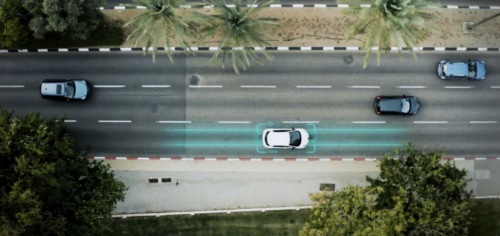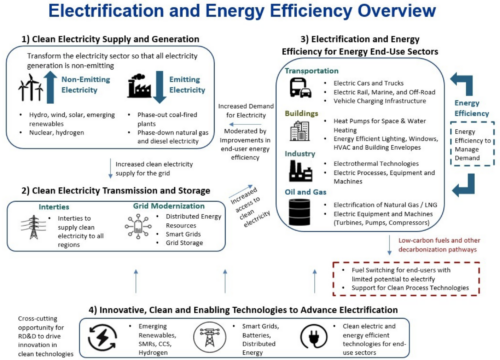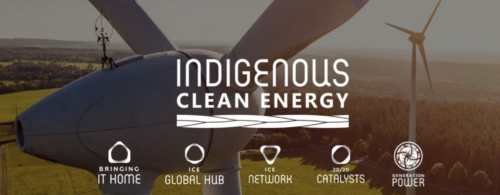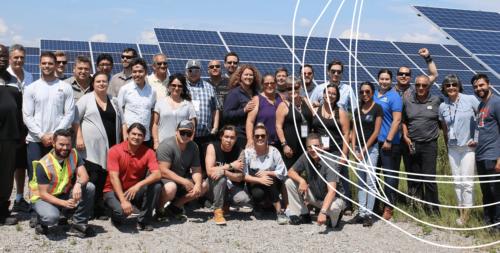
Provided by Electreon
Sweden’s First EV-Charging Road Will Power Electric Vehicles as They Drive
By Andy Corbley, May 2, 2023
The “E-20” highway stretch in Sweden will soon become the nation’s first functioning charging road to juice the batteries of heavy vehicles carrying freight around the nation.
E-20, (the E actually stands for Europe, rather than electric) runs between Hallsberg and Örebro in the middle of the country’s three major cities, Stockholm, Gothenburg, and Malmö.
Construction is slated to begin in 2025 along a whopping 21 kilometers of road (13 miles), but it hasn’t been decided which method of charging will be used. Previously-constructed charging roads in Europe have used methods that require outside equipment—overhead wires like a city tram line or undercarriage-mounted arms that attach to an electrified rail along the roadway.
These are highly impractical for regular motorists, who can neither reach the cables nor afford to mount a robotic arm on their car.
The last option, and the only sensible one for cars as well as trucks, is to build wireless charging infrastructure down the center of the lanes that send out an electromagnetic signal to a coil on the underside of the vehicle small enough to be fitted to a sedan or a tractor-trailer.
In any case, in order to conduct long-haul trucking in the larger European countries, there has to be sensible charging infrastructure to prevent the trucks from becoming overloaded with the battery packs necessary to drive long distances.
“If you are going to have only static charging full battery solution for heavy-duty vehicles, you will get vehicles with a huge amount of batteries that the vehicles need to carry,” said Jan Pettersson, Director of Strategic Development at Trafikverket, the Swedish transport administration.
Euronews cited a recent study which found that 412 privately driven cars on parts of Swedish national and European roads could have their battery capacity reduced by more than 50% through a combination of access to electrified roads and home charging.
Furthermore, only 25% of all roads would need to be electrified for the system to work.
GNN has closely followed charging road developments. In 2021, GNN reported that the Indiana Department of Transportation built a wireless charging road designed by the German firm Magment.
In Michigan a year later, Governor Gretchin Witmer announced a 1-mile stretch of road in Detroit would be electrifed—and she contracted the same company that built Sweden’s first wireless charging road pilot program on the Island city of Visby.
Germany, Israel, and Italy have all implemented similar projects.
***
Canada’s Clean Electricity Regulations
![]()
Electrifying more activities—from vehicles to heating and cooling buildings to various industrial processes—will be needed for Canada to transition to net-zero emissions by 2050. To do that, Canada needs to both increase the supply of electricity and ensure that all electricity generation has net-zero emissions.
The Government of Canada is currently developing the Clean Electricity Regulations (CER) that will help drive progress towards a net-zero electricity grid by 2035. Work on clean electricity will also be key to reaching Canada’s ambitious and achievable 2030 and 2050 climate targets.
The CER can help transition Canada to a net-zero electricity grid by 2035 while ensuring that Canadians can still enjoy a reliable and affordable electricity system. Canada’s Clean Electricity Regulations are being developed around three core principles:
Maximize greenhouse gas reductions to achieve net-zero emissions from the electricity grid by 2035
Ensure grid reliability to support a strong economy and ensure Canadians are safe by having energy to support their cooling needs in the summer and warmth in the winter
Maintain electricity affordability for homeowners and businesses
Achieving this longer-term climate goal will be a joint effort with provinces, territories, Indigenous partners, utilities, non-government organizations, academics, industry, and interested Canadians.
It will also require a number of interrelated actions across the economy.

The CER is part of a suite of measures by the Government of Canada from the 2030 Emissions Reduction Plan to move the country’s s electricity sector to net-zero, as an enabler for broader decarbonisation.
Canada understands the transition to net-zero will require major investments in clean electricity generation, storage, and grid modernization to meet increasing demand from electrification in other parts of the economy as grid operators simultaneously decarbonize generation.
Moving forward on developing the Clean Electricity Regulations sends a clear signal to investors, provinces and territories, and industry about the kinds of technology that Canada’s electricity sector will need to use to generate reliable and non-emitting power. This will help to drive the phasing down of existing electricity generation from non-abated fossil fuel fired electricity plants and ensure that any new power generation built in Canada is zero-emission.
The CER will support the competitiveness of the economy by providing a clear basis for provinces and territories to plan and operate their electricity systems, while continuing to deliver reliable electricity to Canadians and keeping costs for households and businesses affordable.
***
Powering an Indigenous-led Clean Energy Future

https://indigenouscleanenergy.com/



